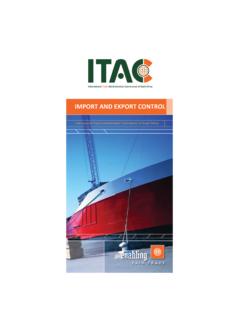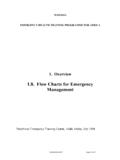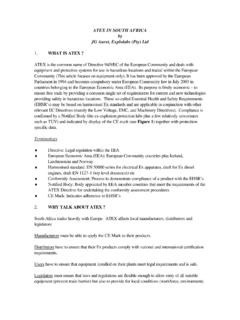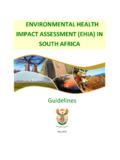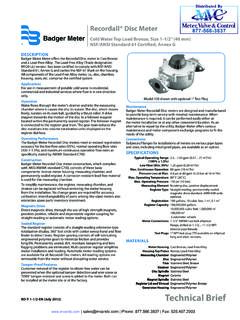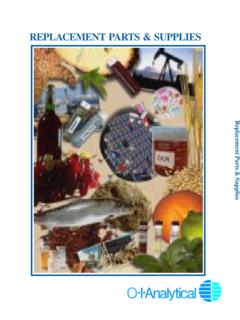Transcription of BUSINESS PLAN - Heart for Africa
1 BUSINESS plan . A Heart FOR Africa INITIATIVE - SWAZILAND. CONTENTS. Acronyms 3. Internal Analysis 20. Appendix 37. 20. Marketing, finance and 38. Project Canaan Budget accounting skills and resources 42. Corn Production Cost - Figure Introduction 4. Production/operations/technical 43. Fish Production: Cost & Profitability 4. Executive Summary skills and resources Analysis - Figure 8. Vision SWOT analysis 44. Fish Production: Cost & Profitability Assets Analysis - Figure Mission Statement Analysis of internal skills and 45. Fish Production Cash Flow - Figure Values resources 46. Range analysis of projected fish Fundamental Purpose 23. Value chain analysis production 24.
2 Strategy identification 47. Vegetable Production: Cost &. External Analysis 9. Development of strategies to Profitability Analysis - Figure 9. Environmental analysis: major achieve objectives 48. Vegetable Production: Cost &. trends and issues 9. 25. Key targets Profitability Analysis - Figure Persons responsible 49. Cash Flow for vegetable production - Regulatory trends basic 27. Major risks and Figure information countermeasures 50. Contour Map Economic trends and issues 51. Green Houses Layout 10. Social cultural trends and issues 11. Technological trends and issues 12. Regional trends and issues Industry Analysis 14. Project Implications 28.
3 14. Size and growth 28. Economic factors Power of buyers 28. Social implications Power of suppliers 15. Threat of substitutes Threat of entrants Financial Analysis 30. Nature of rivalry among 30. Project budget description competitors Corn production 16. Distribution channels Fish production Costs 32. Vegetable prodction Customer Analysis 18. Strategic control 34. 18. Customer Need Analysis 34. Reporting requirements Review process and period Competitor Analysis 19. Investment Opportunities 35. Written by: Kaleli Mulli Edited by: Wayne Clark, Howard Hodel and Carl Watry. 2. ACRONYMS. AIDS Acquired Immune Deficiency Syndrome ASAL Arid and Semi-arid Land CPP Crop Protection Products EUREP GAP European Union's Good Agricultural Practices FPE Free Primary Education GLOBAL GAP Global Good Agricultural Practices GDP Gross Domestic Product HACCAP Hazard Analysis Critical control Points HFA Heart for Africa HIV Human Immunodeficiency Virus IPM Integrated Pest Management IDA International Development Association IFAD International Fund for Agricultural Development IT Information Technology ISO International Standards Organization MYOB Mind Your Own BUSINESS Accounting Software NAMboard National Agriculture and Marketing
4 Board NGOs Non-Governmental Organizations PEST Political Economic Socio-cultural Technological PC Project Canaan PRSAP Poverty Reduction Strategy and Action plan R & D Research and Design SACU Southern African Customs Union SAGE Accounting Software SIDA Swedish International Development Corporation Agency SHIES Swaziland Household Income and Expenditure Survey SNL Swaziland National Land SWOT Strengths Weaknesses Opportunities Threats TDL Title Deed Land UNESCO United Nations Education, Scientific and Cultural Organization UNICEF United Nations International Education Children fund UNDP United Nations Development Program USAID United States Agency for International Development USCB United States Census Bureau VCA Value Chain Analysis WFP World Food Programme 3.
5 EXECUTIVE SUMMARY. M. ost of Africa is in a well-documented crisis relating to poverty, war, lack of development, lack of education and disease, most notably the HIV/AIDS pandemic. Most Africans have only a fourth grade education and 314 million Africans live on less than $1 a day. It is documented that 6,400 people die daily from AIDS in sub-Saharan Africa . Every 14 seconds a child is orphaned by AIDS leaving 11 million AIDS orphans in sub- Saharan Africa . One of Africa 's smallest nations is in many ways in the worst trouble. Swaziland has an area of only 6,700 sq. mi. and is about the size of New Jersey. It is almost entirely contained within the north east quadrant of the Republic of South Africa , sharing one small part of its border with Mozambique.
6 Swaziland is a predominantly Christian country, with a stable government for over 100 years, and is the last independent monarchy in Africa . It has one tribe of people, one language and has never known war. It ought to be one of the garden spots of Africa , but this tiny nation is dying. In 2005, the population of Swaziland was million people. Today its population has fallen to 950,000 and continues to decline predominantly due to AIDS. Swaziland's documented AIDS rate is but practitioners on the ground believe is it closer to 56%. As the parents die of HIV/AIDS, the orphans and vulnerable children (OVC's). are being cared for by grandmothers (or Gogos) or by older children in the family.
7 It is estimated that there are 200,000 + orphans in the country with eight thousand (8,000). more Swazi children becoming orphaned each month. It is reported that there are over 15,000 orphan-headed households in Swaziland with some caregivers as young as 10. years old. Swaziland Capital Lobamba (Royal & Legislative). Mbabane (Administrative). Largest City Mbabane Official Languages English, siSwati Area 17,364 KM2 or 6,704 sq. mi. Currency Lilangeni Motto Siyinqaba (SiSwati). 4. EXECUTIVE SUMMARY. The largest single need in Swaziland (as in much of Africa ) is food. Even when people band together to create homes for the OVC's, they still struggle to provide enough food.
8 Many people from the West have responded by creating new children's homes, supporting indigenous homes and/or sending aid in one form or another--all good efforts, but that is still not enough. At Heart for Africa (HFA) our response is Project Canaan, a 2,500 acre tract of land which will be home to a very large farm providing food and the income necessary to sustain our partner OVC homes. In addition, this multi-use property will involve childrens homes and schools for OVC's, training centers ..over 500 acres of ground and a medical clinic. The farm is expected to consist of over 500 acres of ground crops, 20-25 acres of greenhouses, a large, multi-pond fish farm, an ISO approved export facility and a much needed dairy farm and processing plant.
9 The dairy farm alone would have a major impact on the country. Swaziland consumes over 15 million gallons of milk annually but produces only 2 million gallons internally, requiring them to import 13 million gallons of milk each year. The government encourages milk production because the current processing plants are already at maximum capacity. Heart for Africa a 501(c) 3 registered charity, initially established Project Canaan (PC). to provide financial assistance for its supported orphan homes. HFA's leaders are former founders and owners of one of the largest marketing firms in Canada in the 1980's. HFA partners with already existing but fragile children's homes in Africa and supports them by providing child sponsorship, building home infrastructures, and providing food, clothing and shelter to indigent children and planting gardens in rural homes among many other activities.
10 More can be learned about HFA on its website, 5. INTRODUCTION. HFA is developing Project Canaan in partnership with successful BUSINESS people from North America, who are working in collaboration with talented, experienced and educated BUSINESS individuals from Kenya and Swaziland, to create a unique, tailor- made organization that meets the needs of African children living in abject poverty in Africa and to address food scarcity and nutritional deficiency in a region where HIV/. AIDS has destroyed many lives. Project Canaan's agricultural operations in Swaziland will provide food for the children's homes that HFA supports. Excess produce will be sold to pay farm operating expenses with excess income used to subsidize other essential costs such as children's medical care, education material, staff salaries in the homes and more.

